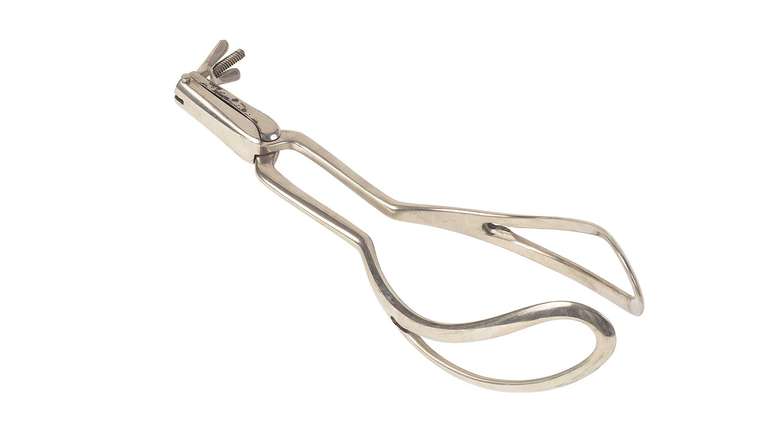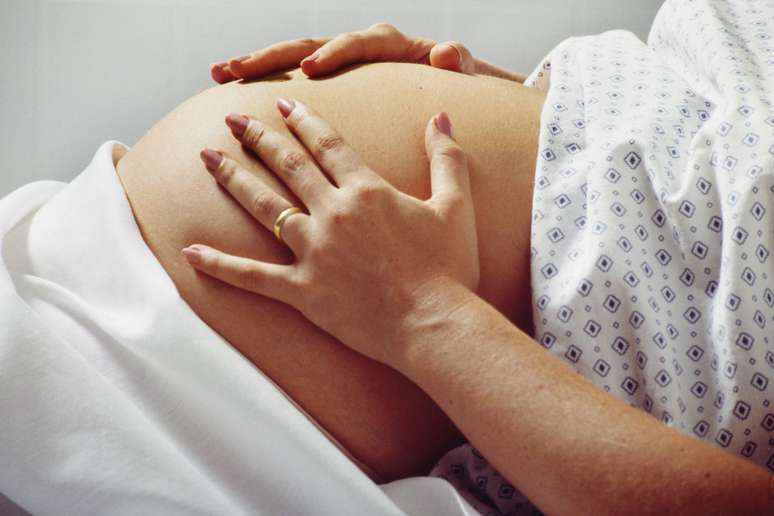It currently has more specific indications, but continues with its importance. When used correctly, it can save the lives of mothers and babies.
In the past, it was common to hear stories about babies born “with forceps”. However, those of a younger generation who are pregnant for the first time may not even have heard this expression before. And it makes sense. “It is an instrument used infinitely less nowadays,” underlines the gynecologist and obstetrician Filipe Silva, of the Hospital e Maternidade Sepaco (SP). The tongs is a metal tool, resembling the shape of a handle, with two spoons. “It was idealized and put into use around the 19th and 20th centuries and was very important in reducing the risk of babies being born without oxygen,” explains the professional.
html[data-range=”xlarge”] figure image img.img-0729eb378c1d318101cf54ae6b3dc0577d1m1vjt { width: 774px; height: 516px; }HTML[data-range=”large”] figure image img.img-0729eb378c1d318101cf54ae6b3dc0577d1m1vjt { width: 548px; height: 365px; }HTML[data-range=”small”] image figure img.img-0729eb378c1d318101cf54ae6b3dc0577d1m1vjt, html[data-range=”medium”] figure image img.img-0729eb378c1d318101cf54ae6b3dc0577d1m1vjt { width: 564px; height: 376px; }
At the time, cesarean section was not a safe procedure. Then, when the baby, for some reason, had difficulty passing through the birth canal, the doctors used the piece to help pull him out. ” Forceps have done a lot to reduce infant mortality and, to some extent, also maternal mortality,” he says. Today, with more frequent C-sections, anesthesia and lower risk of infection, the use of forceps is reserved for a few situations, even if it is very useful, when advised and applied in the right way.

When are forceps used?
One of the most common indications for the use of forceps, according to the specialist, is when, in a vaginal birth, the baby is very far down the birth canal, close to the exit, but the woman loses the ability to push, either because of anesthesia or because I was very tired. “In this situation, forceps can provide relief, because the baby shouldn’t be in the vaginal canal for long. There could be a lack of oxygen, with the possibility of also having some type of neurological injury, or the mother’s vagina could hurt “Silva explains. That is, forceps are used when, for some reason, it is necessary to speed up the final stage of childbirth.
If the baby is too short when a complication occurs or the mother is no longer able to push, doctors avoid C-sections for two reasons. One of them, according to the Sepaco obstetrician, is the risk of infection. “The baby was already near the exit of the vaginal canal, in contact with the flora, after going through labor. If you open the belly and let him out from there, you bring all the contamination into the region, into the uterus, to the abdominal cavity “, He says. “The other reason is the risk of injuring the uterus in the extraction, when pulling the baby from the bottom to the belly,” he adds.
Pliers for aspirator aspirator
Before, there were gripper models for different stages, to be able to reach babies that were taller (or further away from the exit of the birth canal). “There are about three or four types on the market today, but the differences are more in terms of choice [preferência] of the professional than, specifically, of the type of use”, underlines the obstetrician.
A very common confusion among the lay public happens between extractor forceps and vacuum which, according to the specialist, are two different tools, used for similar purposes. The former is a metal object, the latter is plastic or silicone. “The forceps put pressure on the baby’s head and the aspirator, as the name suggests, creates a vacuum between the device and the baby’s head to help with traction,” says the specialist.
Forceps and risks
One of the main doubts of fathers and mothers, not only in relation to forceps, but on any intervention during childbirth is: does it have any risks? ” Every instrumental birth carries a risk for the babyor forceps or aspirator,” says the doctor. That’s why, he reiterates, it’s like this It is important that the indication is well done, with clear criteria, and that the professional who will manage the tool has experience and knowledge.

Filipe Silva explains that there is a possibility that the mother’s vaginal canal is injured, more than just passing the baby would. “But, if forceps is used by a well-trained health professional, that risk goes down a lot,” he says. Already in the child it is possible that the instrument produces small spots or traumas on the skin. “If used improperly, it can cause injuries to the child’s face or head, but they’re usually minor,” he adds.
Remember that the aspirator, if placed in the wrong place, can damage the scalp and even cause excoriation or necrosis [morte do tecido] part of the child’s head. “For this reason, both forceps and vacuum must be performed with very specific indications, in which the possible cost of the procedure is lower than the benefits, from a clinical point of view, and by well-prepared people”, he reinforces.
Another frequently asked question, the specialist points out, is whether the child suffers during the procedure. “In fact, it’s the other way around. When we use forceps or a vacuum, this happens as a last-resort condition. So, the baby is probably already compromised, and when we use the tool, he may be born a little softer, without cry. Normally, these birth conditions are attributed to the use of forceps, but, in reality, the conditions led to the need for the forceps,” she points out. For the mother, the process can cause discomfort and pain. “Therefore, it is essential that she has pain reliever,” she says.
The doctor attending the birth should try to do a pull test, i.e. see if the baby arrives. “Otherwise, in some cases, it is necessary to disarticulate the instrument and proceed with the caesarean section,” comments Silva. With a vacuum, a maximum of three attempts to pull the child are made. If it doesn’t work, the path will probably also be surgical.
Most importantly, you prepare yourself for these scenarios by choosing a doctor you trust. and, if possible, speaking frankly to him during the nine months, in the pre-natal period, to remove any doubts. Therefore, it will be much easier to trust the professional’s conduct, should he have to recommend a measure like this. With information, everything flows more easily, right?
Source: Terra
Ben Stock is a lifestyle journalist and author at Gossipify. He writes about topics such as health, wellness, travel, food and home decor. He provides practical advice and inspiration to improve well-being, keeps readers up to date with latest lifestyle news and trends, known for his engaging writing style, in-depth analysis and unique perspectives.






